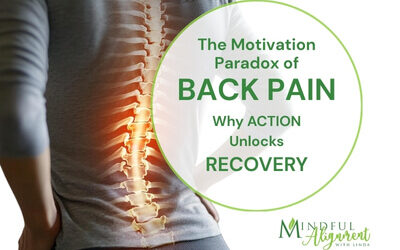Myofascial Pain Syndrome and How to Manage It
What is Myofascial Pain Syndrome?
Have you ever experienced nagging, deep-seated pain in your back that won’t go away? You may have tried stretching, massages, and heat packs, but the discomfort lingers. If this sounds familiar, you might be dealing with myofascial pain syndrome (MPS). This chronic pain condition affects the muscles and fascia (the connective tissue surrounding them).
Symptoms of Myofascial Pain Syndrome
Unlike general muscle soreness, MPS involves trigger points—tight knots in the muscle that can cause local pain and even send pain to other areas (referred pain). These trigger points are often tender to the touch and can make everyday movements stiff and uncomfortable. Other symptoms may include facial, shoulder, and back pain and tension headaches. Sleep may also be disrupted due to pain leading to less energy.
It’s important to remember that MPS is a common issue, not a personal failing. It’s different from common muscle strain because the pain persists, even when you’re at rest. It can develop gradually due to poor posture, stress, or repetitive movements, making it a frequent issue for those who sit for long periods or engage in repetitive tasks.
Muscles Commonly Affected by Myofascial Pain
The back is a complex structure of bones, muscles, fascia, nerves, and ligaments that support movement and posture. Understanding which muscles are commonly affected by myofascial pain can help you identify and address discomfort more effectively.
Key Muscle Groups in the Back
Trapezius Muscle:
A large, triangular muscle covering the upper back, neck, and shoulders.
Common MPS Trigger Points: Along the tops of the shoulders, where people tend to hold tension from stress. Pain can radiate to the neck and head, sometimes causing tension headaches.
Latissimus Dorsi Muscle:
This is the broad muscle from the lower spine to the upper arm.
Common MPS Trigger Points: Under the shoulder blade or along the mid-back, causing referred pain in the shoulder or side of the torso.
Rhomboid Muscles:
Muscles that connect the shoulder blades to the spine, assisting with posture and movement.
Common MPS Trigger Points: Between the shoulder blades, often leading to a dull ache or a “knot” sensation that worsens with poor posture.
Erector Spinae:
A group of muscles running along the spine in the lower and mid-back that helps with posture and extension.
Common MPS Trigger Points: Are near the lower back, leading to stiffness and pain that can spread into the hips or buttocks.
Quadratus Lumborum (QL):
A deep muscle in the lower back that connects the lower ribs to the pelvis and plays a key role in bending and stabilizing the spine.
Common MPS Trigger Points: Hip pain may be referred from the lower back.
Gluteal Muscles:
Technically part of the hip. These muscles, gluteus maximus, medius, and minimus, located in the lower back & hips, are crucial for back support.
Common MPS Trigger Points: In the upper glutes, leading to pain in the lower back, hips, or even down the leg.
Myofascial pain can be localized, meaning the discomfort stays in one area, or referred, meaning the pain presents itself elsewhere in the body. For example:
A trigger point in the trapezius muscle can cause pain in the neck and even lead to headaches. Tightness in the Quadratus Lumborum can create deep, aching pain in the lower back and hips, often mistaken for disc problems. Myofascial pain in the rhomboids can feel like a persistent knot between the shoulder blades that won’t go away.
What Causes Myofascial Pain Syndrome in the Back?
Several factors can contribute to MPS in the back, including:
- Poor Posture – Slouching or sitting in one position for too long can overwork the muscles, leading to trigger points.
- Repetitive Movements – Lifting, bending, or twisting can strain the back muscles, causing tension and pain over time.
- Stress and Anxiety – Emotional stress can lead to muscle tension, especially in the neck, shoulders, and back. This chronic tightness may develop into MPS.
- Muscle Overuse or Injury – Strenuous exercise or sudden movements can lead to microtears in the muscles, which can turn into persistent trigger points if not adequately addressed.
- Lack of Movement – A sedentary lifestyle can weaken muscles and lead to imbalances, increasing the likelihood of MPS.
How to Manage and Relieve Myofascial Pain in the Back
- Gentle Pressure: Apply gentle pressure to trigger points using a tennis ball or foam roller to help release tension. Place the ball against a wall or floor and roll it over tight spots in your back.
- Targeted Stretching: This can help lengthen tight muscles and prevent trigger points from forming. Gentle spinal twists, cat-cow, and doorway chest stretches can be particularly effective.
- Apply Heat: Applying heat (like a warm compress or heating pad) can relax tight muscles. At the same time, ice packs can reduce inflammation in painful areas.
- Proper Posture and Support: If you sit for long periods, ensure your chair supports your lower back and keep your feet flat on the floor
- Movement Breaks: For sedentary jobs or lifestyles, make an effort to take frequent movement breaks.
- Low Impact Exercises: Strengthening and mobilizing the back with low-impact exercises like yoga, Pilates, or swimming can prevent future pain flare-ups.
- Relaxation: Since stress can contribute to muscle tension, practices like deep breathing, meditation, or progressive muscle relaxation can help reduce overall tension in the body.
- Professional Support: Working with a physical therapist, massage therapist, or myofascial release specialist can provide targeted relief if your pain persists. Alternative techniques like dry needling or manual therapy may help.
Myofascial pain syndrome in the back can be frustrating, but with the right approach, relief is not just a possibility; it’s a likelihood. A combination of self-care, movement, and stress management can help keep those stubborn trigger points under control. If you’ve been struggling with persistent back pain, taking small steps—like incorporating stretching, self-massage, and ergonomic adjustments—can make a big difference in how you feel every day.
Here’s a few videos to help you on your wellness journey:
Are you tired of living with pain?
Are your activities and daily choices determined by your level of pain?
Are you ready to change your life for the better and gain back your physical freedom?
My unique and custom designed approach comes from years of training, education and experience. Together, we will get you back to living pain free and enjoying life.
Sign up for a private session today
It’s never too late to try something new.

Related Articles:
Beyond Calcium: The Power of Yoga for Bone Health
Discover how yoga supports bone health and osteoporosis prevention. Learn science-backed poses that strengthen your skeleton and reduce fracture risk.
The Motivation Paradox: Action is the Catalyst for Healing Back Pain
Discover the Motivation Paradox of Back Pain—why waiting for motivation keeps you stuck and how action is the true catalyst for healing. Learn science-backed strategies to break the pain cycle and reclaim mobility.
Transform Back Pain Anxiety: From Uncertainty to Empowerment
Discover how to navigate pain anxiety with empowerment. Embrace uncertainty and reclaim your healing journey through mindfulness and resilience.
Transforming Your Relationship with Back Pain: A Mindset Revolution
Back pain is more than a physical challenge—it's a profound psychological journey. The real battle isn't just in your muscles and joints, but in your mind. Your thoughts can either be a prison or a pathway to healing. Reframing Your Inner Narrative When chronic pain...




